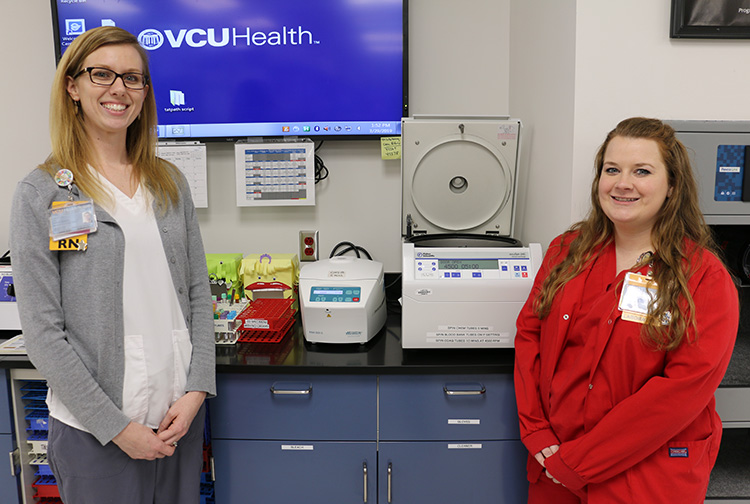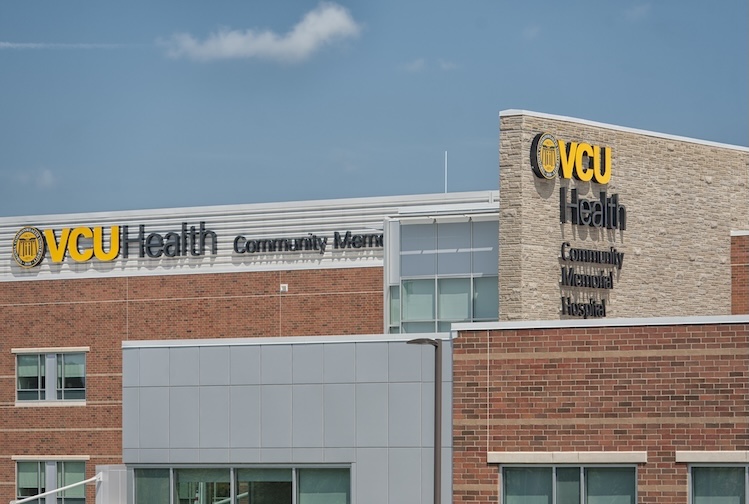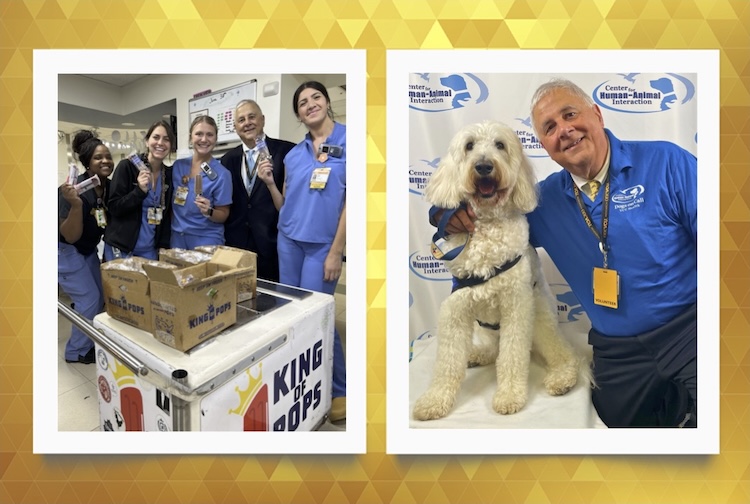Walk In My Shoes Takes Positive Steps
April 02, 2019
Emily Lucy, an oncology clinical nurse, and Sarah Fox, senior medical laboratory technician discover time-saving steps as part of VCU Health Community Memorial Hospital's Walk In My Shoes program.
Walk In My Shoes Takes Positive Steps
An ongoing shadowing program that provides staff at VCU Health Community Memorial Hospital opportunities to work alongside other departments has already brought about time saving procedural changes in health care.
Departments within a hospital tend to have their own unique culture of technical skills, terminology, and workflow practices.
Christina Duke, Laboratory Department Director at VCU Health CMH, said the program emerged following an employee satisfaction survey. In that survey, employees felt there was an opportunity for better communication between departments.
“We speak lab,” Duke said. “We may not speak nurse.”
A subcommittee was formed this past December allowing representatives from various departments to meet and share ideas on where improvements could be made. The “Walk In My Shoes” program was born after Christina Duke shared the idea with clinical practice.
It didn't take long before interdepartmental shadowing gained results.
Sarah Fox, Senior Medical Laboratory Technician, and Emily Lucy, an Oncology Clinical Nurse, together came up with an idea that has reduced the laboratory processing time for oncology patients who are waiting for treatment by 10 minutes.
Traditionally, a blood sample would be drawn from an oncology patient and then sent to the lab for the processing to begin.
The first step is to spin the sample after it is received, which takes about 10 minutes. The instrument then reads the sample, taking an additional 30-40 minutes to run.
“We saw an opportunity where we could spin the blood sample while waiting for the courier, saving those 10 minutes of testing time in the lab,” Fox said.
Lucy added, “Anything to speed our patients' time along in the clinic and to make their day a little better.”
Other advantages of the program have surfaced.
“Staff members are able to see the perspective of other departments and see how busy they are,” Duke said.
As an example, the emergency department learned why analyzing a flu test took so long. “You don't understand someone else's role until you see it,” she said, again emphasizing that there are several steps in the process in addition to sanitizing between each to avoid contamination and allow for accurate results.
“You do not want any contamination,” Duke said. “It is very meticulous because you are multiplying DNA.”
In many ways, the program has improved communication between departments and has helped develop a greater respect for each department's role in the hospital.
An opportunity for continued growth in teamwork is vital for relationships and success in health care, according to Duke.
“It has made people feel more comfortable to bring up an idea or issues without feeling judgement,” Duke said.
Duke said she interviewed Lucy after a two hour walk within the laboratory department. Likewise she said she encourages a reflective conversation when laboratory employees visit other departments.
“I like to see the outside perspective,” she said.
The committee continues to meet on a monthly basis to discuss ways departments can continue to partner with one another.




